By Steve Lapa
Lapcom Communications Corp
President
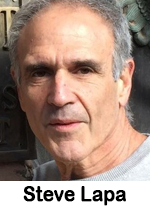 Almost everything I know about pricing strategy I learned from domestic airlines. Guess what? Airlines are at it again and I hope you are watching and learning.
Almost everything I know about pricing strategy I learned from domestic airlines. Guess what? Airlines are at it again and I hope you are watching and learning.
As a young national sales manager, then general manager, based in South Florida in the 80s, I became a student of some of the best competitive marketing strategies ever created. Anyone would be hard pressed to remember all the domestic airline brands that serviced South Florida back then. Off the top of my head, here are the nine I remember: Eastern, Delta, Continental, American, United, US Air, Pan Am, TWA, and for a short time, Florida Airlines. Depending on the routes and time of year, the competition was crazy. Once the fourth quarter holiday season began in these pre-computerized days, last-minute changes kept me at my desk way too long, showing up late for several holiday dinners. Pricing, heavy ups, and copy changes came down with minimal lead time and a mandate of no make goods. Computers were first working their way into radio stations. Inkjet printers were in development and mobile phones were still in the lab at Motorola.
Armed with a desktop calculator, pencil, and yellow pad, I worked feverishly to keep up with the airline marketing tsunami that hit the Miami market leading up to Christmas travel. Our traffic department was the only part of our radio station that worked with computers. Nevertheless, stress and anxiety ruled until all orders were correctly inputted and confirmed. Once the smoke cleared, I decided to learn from our clients, the original pricing disruptors: the airlines of the early 80s.
After visiting with marketing directors, I learned how market demand and inventory were calculated and balanced to determine pricing. Later, I studied how Southwest successfully pre-sold into markets they were about to service. The successful airlines taught me how to improve the execution of “grid card rate management.” How to fine-tune and balance anticipated sell-out levels and integrate seasonality. Later, the art of successful pre-selling became an important part of our mission.
Fast-forward to today’s airline marketing and pricing. It’s all about the upsell. Consider all the options you have once you book that economy ticket. From early boarding, extra legroom, baggage fees, refundable vs. non-refundable tickets, travel insurance, to double the points, etc.
Airline income and profits are still on the post-pandemic upswing. Domestic travelers are out in force, many travelers comfortably participating in the upsell. The strategy is working.
Few if any radio-audio sellers are skilled in upselling. Most managers are not skilled in the upsell strategy and rarely have the time to learn. The concept may feel a little awkward at first, but once you understand how to work with the spectrum of assets your platforms can offer, the upsell strategy can help increase your sales as you help your clients!
Steve Lapa is the president of Lapcom Communications Corp. based in Palm Beach Gardens, FL. Lapcom is a media sales, marketing, and development consultancy. Contact Steve Lapa via email at: Steve@Lapcomventures.com.
Share this with your network
 exploring the audio strategies behind real business success to provide behind-the-scenes insights, creative inspiration, and tips from brands that are scaling with sound. Topics being addressed include: 1) What makes audio such an effective channel for performance and brand-building. 2) How local advertisers are using radio to stand out and win more wallet share. 3) Why podcast hosts have become some of the most trusted voices in advertising. And 4) Lessons learned: real-world advice from brands turning listeners into loyal customers. You can register here.
exploring the audio strategies behind real business success to provide behind-the-scenes insights, creative inspiration, and tips from brands that are scaling with sound. Topics being addressed include: 1) What makes audio such an effective channel for performance and brand-building. 2) How local advertisers are using radio to stand out and win more wallet share. 3) Why podcast hosts have become some of the most trusted voices in advertising. And 4) Lessons learned: real-world advice from brands turning listeners into loyal customers. You can register here. 


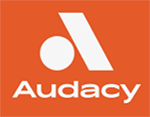 marketers, not because it’s ineffective, but because it’s quietly efficient.” He adds, “Low levels of variability and the lack of granular data at the campaign and market levels can cloud the results. Smaller campaign investments can also fly under the radar, making it harder for models to detect Audio’s true impact.” Borelli says Audacy is working with other audio companies and with partners like the RAB and IAB to provide more granular data and to standardize model inputs. “We’re running model audits and retroactive studies to properly demonstrate Audio’s impact including replacing media plan data with ‘as-run’ actuals because as-run data provides significantly more variation, which stimulates the models to more effectively identify radio’s correlation with sales results.”
marketers, not because it’s ineffective, but because it’s quietly efficient.” He adds, “Low levels of variability and the lack of granular data at the campaign and market levels can cloud the results. Smaller campaign investments can also fly under the radar, making it harder for models to detect Audio’s true impact.” Borelli says Audacy is working with other audio companies and with partners like the RAB and IAB to provide more granular data and to standardize model inputs. “We’re running model audits and retroactive studies to properly demonstrate Audio’s impact including replacing media plan data with ‘as-run’ actuals because as-run data provides significantly more variation, which stimulates the models to more effectively identify radio’s correlation with sales results.” 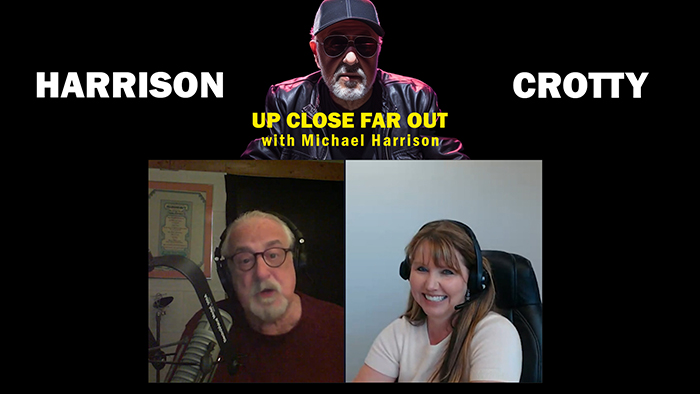
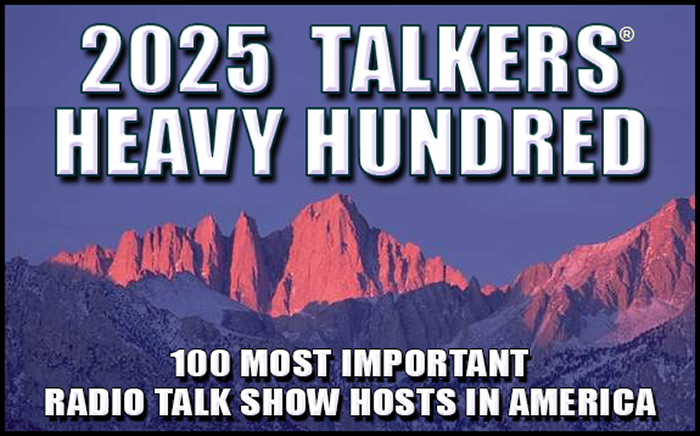
 If you saved back issues from when TALKERS was a print tabloid, dig-down about 20 years into the stack. A couple times a year beginning then, I was reporting from conferences then called The Podcast and New Media Expo, which later evolved into NMX and BlogWorld and other incarnations.
If you saved back issues from when TALKERS was a print tabloid, dig-down about 20 years into the stack. A couple times a year beginning then, I was reporting from conferences then called The Podcast and New Media Expo, which later evolved into NMX and BlogWorld and other incarnations.
 manager Liz Mayer says, “There is no denying that YouTube is playing an important role in the podcast ecosystem, especially when it comes to discovering new podcasts. However, over half of weekly podcast consumers indicate they consume via audio primarily. So, while the new video capabilities are exciting and need to be focused on, the industry can’t forget that it’s what consumers are hearing that is most important.” Highlights from the report include: 1) Audio remains the primary mode of podcast consumption (58%) despite growing video options; 2) YouTube is the leading podcast platform, yet it is not a walled garden as consumers listen to podcasts across multiple platforms; 3) Podcast discovery: YouTube is the place to be found; 44% of new podcast audiences started listening on YouTube; 4) Downloads and listens underestimate the actual audience: The current download impression model fails to account for co-listening; and 5) Why podcast advertising works so well: Podcasts hosts are three times more influential than social media influencers.
manager Liz Mayer says, “There is no denying that YouTube is playing an important role in the podcast ecosystem, especially when it comes to discovering new podcasts. However, over half of weekly podcast consumers indicate they consume via audio primarily. So, while the new video capabilities are exciting and need to be focused on, the industry can’t forget that it’s what consumers are hearing that is most important.” Highlights from the report include: 1) Audio remains the primary mode of podcast consumption (58%) despite growing video options; 2) YouTube is the leading podcast platform, yet it is not a walled garden as consumers listen to podcasts across multiple platforms; 3) Podcast discovery: YouTube is the place to be found; 44% of new podcast audiences started listening on YouTube; 4) Downloads and listens underestimate the actual audience: The current download impression model fails to account for co-listening; and 5) Why podcast advertising works so well: Podcasts hosts are three times more influential than social media influencers.  TALKERS publisher Michael Harrison introduced the term in the 1990s, inviting us to think-beyond the real-time audio we were sending up those towers. What he described seemed conceptual, even futuristic, back then, when we were still logging-onto AOL via dial-up (screech).
TALKERS publisher Michael Harrison introduced the term in the 1990s, inviting us to think-beyond the real-time audio we were sending up those towers. What he described seemed conceptual, even futuristic, back then, when we were still logging-onto AOL via dial-up (screech). listening to audio daily, compared with 3 hours and 50 minutes among the non-Black population – over 30 minutes more per day. “This listening includes music as well as spoken-word content, such as podcasts and talk radio. We often thank creators for the audio masterpieces that captivate us, which are all very much deserved. Today, we also thank Black consumers for fueling the success of musicians, podcasters, and radio hosts.”
listening to audio daily, compared with 3 hours and 50 minutes among the non-Black population – over 30 minutes more per day. “This listening includes music as well as spoken-word content, such as podcasts and talk radio. We often thank creators for the audio masterpieces that captivate us, which are all very much deserved. Today, we also thank Black consumers for fueling the success of musicians, podcasters, and radio hosts.” 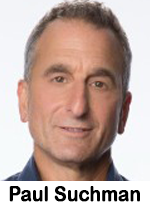 more recognition as a (legacy) medium that’s constantly innovating and evolving to enhance the consumer experience and the advertiser opportunity. At the heart of Audio lives great storytelling. From the beginning of humankind to today’s best advertising, storytelling is the single most effective tool for sharing information and knowledge – all while entertaining, educating and yes, selling. Storytelling is a constant, but the way stories are told is shifting, driven by new technologies and approaches that allow brands to create more emotional connection, deliver more personalized experiences and scale their campaigns for maximum impact. And no medium is better equipped to do this than audio.”
more recognition as a (legacy) medium that’s constantly innovating and evolving to enhance the consumer experience and the advertiser opportunity. At the heart of Audio lives great storytelling. From the beginning of humankind to today’s best advertising, storytelling is the single most effective tool for sharing information and knowledge – all while entertaining, educating and yes, selling. Storytelling is a constant, but the way stories are told is shifting, driven by new technologies and approaches that allow brands to create more emotional connection, deliver more personalized experiences and scale their campaigns for maximum impact. And no medium is better equipped to do this than audio.” 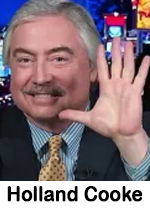 We – inside-the-box – live and breathe radio. Listeners have their hands full just living and breathing. Their day is time crunched and financially challenging, and we want to be its soundtrack.
We – inside-the-box – live and breathe radio. Listeners have their hands full just living and breathing. Their day is time crunched and financially challenging, and we want to be its soundtrack.
 Almost everything I know about pricing strategy I learned from domestic airlines. Guess what? Airlines are at it again and I hope you are watching and learning.
Almost everything I know about pricing strategy I learned from domestic airlines. Guess what? Airlines are at it again and I hope you are watching and learning. be able to alter the course of established radio stations and the marketplace of ideas before the 2024 election or even soon thereafter. Harrison told “America at Night” host Rich Valdés last night (5/22) that radio is far too idiosyncratic an industry – already run by too many people who don’t understand how it really operates – for someone (who also doesn’t really have first-hand experience in the field) to just step in and make drastic alterations to entrenched stations, formats, audiences and sponsors just to make a political statement. Harrison states, “There are more
be able to alter the course of established radio stations and the marketplace of ideas before the 2024 election or even soon thereafter. Harrison told “America at Night” host Rich Valdés last night (5/22) that radio is far too idiosyncratic an industry – already run by too many people who don’t understand how it really operates – for someone (who also doesn’t really have first-hand experience in the field) to just step in and make drastic alterations to entrenched stations, formats, audiences and sponsors just to make a political statement. Harrison states, “There are more 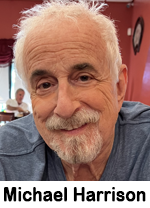 expedient uses of his money if that is his main purpose. After all, not all Audacy stations are conservative news/talkers… many are music, sports and a variety of formats. How inefficient such a move would be!” Harrison went on to say that radio is still an extremely powerful and potentially lucrative medium if only its present owners and operators believed in it and invested in its programming and marketing. He encouraged radio broadcasters to understand and believe in the “esthetic of ‘radio’ and not be so anxious to bail out into the utilitarian term ‘audio.’” Harrison and Valdés tied the discussion into the current news about the AM for Every Vehicle Act currently making its way through Congress stating that radio is still a lifeline for service to the community as a place for information, education, and entertainment and that eliminating it from automobile dashboards would be about “five to 10 years premature.”
expedient uses of his money if that is his main purpose. After all, not all Audacy stations are conservative news/talkers… many are music, sports and a variety of formats. How inefficient such a move would be!” Harrison went on to say that radio is still an extremely powerful and potentially lucrative medium if only its present owners and operators believed in it and invested in its programming and marketing. He encouraged radio broadcasters to understand and believe in the “esthetic of ‘radio’ and not be so anxious to bail out into the utilitarian term ‘audio.’” Harrison and Valdés tied the discussion into the current news about the AM for Every Vehicle Act currently making its way through Congress stating that radio is still a lifeline for service to the community as a place for information, education, and entertainment and that eliminating it from automobile dashboards would be about “five to 10 years premature.” 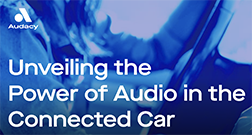 audio experienced a 17% decline. The study identified radio app and voice users as super users who shared common traits and expectations. Audacy notes, “These highly engaged individuals demand seamless transitions for Audio across their home, phone, and car systems… Moreover, they exhibit readiness to spend, particularly in high-budget categories like home improvement and financial services, responding actively to targeted radio ads. For advertisers, crafting personalized ads targeted at these audiences presents an exceptional opportunity to guide listeners through all stages of the purchase funnel.” Other key findings of the study include: 1) Nearly half of radio app users sought information about advertised products online after hearing an ad in the car, compared to 22% of all listeners; 2) 31% of radio app users and 27% of voice users visited the store they heard about, doubling the rate of all listeners; and 3) 27% of radio app users purchased advertised products, more than doubling the rate of all listeners.
audio experienced a 17% decline. The study identified radio app and voice users as super users who shared common traits and expectations. Audacy notes, “These highly engaged individuals demand seamless transitions for Audio across their home, phone, and car systems… Moreover, they exhibit readiness to spend, particularly in high-budget categories like home improvement and financial services, responding actively to targeted radio ads. For advertisers, crafting personalized ads targeted at these audiences presents an exceptional opportunity to guide listeners through all stages of the purchase funnel.” Other key findings of the study include: 1) Nearly half of radio app users sought information about advertised products online after hearing an ad in the car, compared to 22% of all listeners; 2) 31% of radio app users and 27% of voice users visited the store they heard about, doubling the rate of all listeners; and 3) 27% of radio app users purchased advertised products, more than doubling the rate of all listeners. 
 Is that host read you are pitching “baked-in?”
Is that host read you are pitching “baked-in?” podcast advertising. Some of the key takeaways include: 1) Attention quality was highest for the audio ad that had the highest voiceover volume (36%) as opposed to the ad that had the lowest voiceover volume (27%) and the ad that had too many competing elements within the creative (25%); 2) 75% of participants reported a good quality audio ad positively influences their consideration to purchase a product; and 3) The inclusion of multiple competing audio components elements within an audio ad caused the ad to score lower in terms of overall quality than the ads without multiple competing elements.
podcast advertising. Some of the key takeaways include: 1) Attention quality was highest for the audio ad that had the highest voiceover volume (36%) as opposed to the ad that had the lowest voiceover volume (27%) and the ad that had too many competing elements within the creative (25%); 2) 75% of participants reported a good quality audio ad positively influences their consideration to purchase a product; and 3) The inclusion of multiple competing audio components elements within an audio ad caused the ad to score lower in terms of overall quality than the ads without multiple competing elements. 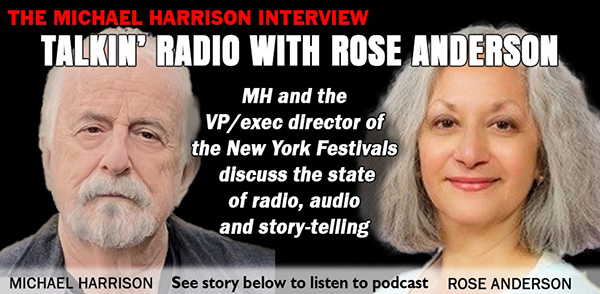
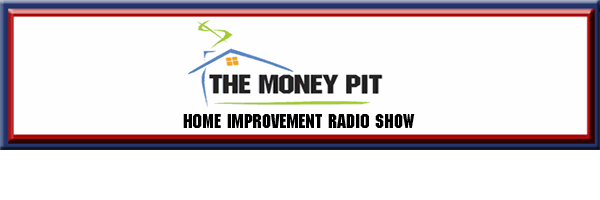
 Tik-Tok is hot (largely among users too young to be heavy AM/FM listeners) and it’s in-the-news (about its possible ban). And, yes, Facebook remains T-Rex in the social media jungle. But people on Twitter seem to live there.
Tik-Tok is hot (largely among users too young to be heavy AM/FM listeners) and it’s in-the-news (about its possible ban). And, yes, Facebook remains T-Rex in the social media jungle. But people on Twitter seem to live there.
 with brands that synchronize with their audio rituals, by +12%, compared to +3% for non-aligned ads. A ranking of typical listening rituals featured in a previous Audacy study, “Audio Rituals,” was topped by running general errands (85%) and doing home maintenance (84%). Consumer engagement levels, though, were most heightened during “me-time” moments (73%), putting my child to bed (70%) and exercising outdoors (68%). Audacy’s “Audio Rituals” study also determined that 74% of listeners incorporated audio into their daily rituals and 40% planned their day/activities around audio content. Audacy head of research and insights Idil Cakim says, “Audio advertisers can amplify the effectiveness of their buys through ritual moments. Study participants agreed that the stronger the match between advertisement and content, the better the outcome for key performance indicators like brand favorability and purchase intent.” Seventy-eight percent of participants agreed that strong content/ad matches mattered in brand favorability and 80% for purchase intent.
with brands that synchronize with their audio rituals, by +12%, compared to +3% for non-aligned ads. A ranking of typical listening rituals featured in a previous Audacy study, “Audio Rituals,” was topped by running general errands (85%) and doing home maintenance (84%). Consumer engagement levels, though, were most heightened during “me-time” moments (73%), putting my child to bed (70%) and exercising outdoors (68%). Audacy’s “Audio Rituals” study also determined that 74% of listeners incorporated audio into their daily rituals and 40% planned their day/activities around audio content. Audacy head of research and insights Idil Cakim says, “Audio advertisers can amplify the effectiveness of their buys through ritual moments. Study participants agreed that the stronger the match between advertisement and content, the better the outcome for key performance indicators like brand favorability and purchase intent.” Seventy-eight percent of participants agreed that strong content/ad matches mattered in brand favorability and 80% for purchase intent.  planners). Suchman writes that this argument “is among the ultimate tussles between media planners and publishers. While some may lean more heavily toward video, we at Audacy respectfully disagree.” He makes a five-point argument in audio’s favor saying it wins in reach, time spent using, is more immersive, activates all senses, and drives recall.
planners). Suchman writes that this argument “is among the ultimate tussles between media planners and publishers. While some may lean more heavily toward video, we at Audacy respectfully disagree.” He makes a five-point argument in audio’s favor saying it wins in reach, time spent using, is more immersive, activates all senses, and drives recall. 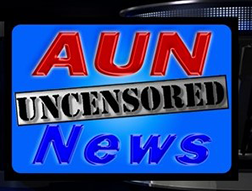 commentators as well as up-and-comers. Trader tells TALKERS he “honestly believes AUN is one of the fastest growing TV and streaming networks in the country.” He states, “Now it is time to expand once again. Our goal is to be broadcasting in every major market in the next two years! This is maybe where an ambitious, hard-working manager can become part of this dream. I am looking to develop a management team to make it happen. If a candidate has expertise in managing finances and accounting, recruiting, human resources, overseeing and developing technologies, as well as creating company policy, sales and marketing, then such an individual might be looking for the challenge of a lifetime.” Trader continues, “I am looking to work with conservative/faithful, passionate ideologs like myself who are concerned with the direction our great republic is heading and want to return it to the Judeo-Christian, faith-based patriotic roots our founding fathers created! Here is the catch: all our progress and success has been achieved on a very tight budget! In fact, we cannot offer salaries. What we can offer is incentives for those who produce to be rewarded.” Interested candidates can contact Rick Trader, president/CEO, AUN TV Network at
commentators as well as up-and-comers. Trader tells TALKERS he “honestly believes AUN is one of the fastest growing TV and streaming networks in the country.” He states, “Now it is time to expand once again. Our goal is to be broadcasting in every major market in the next two years! This is maybe where an ambitious, hard-working manager can become part of this dream. I am looking to develop a management team to make it happen. If a candidate has expertise in managing finances and accounting, recruiting, human resources, overseeing and developing technologies, as well as creating company policy, sales and marketing, then such an individual might be looking for the challenge of a lifetime.” Trader continues, “I am looking to work with conservative/faithful, passionate ideologs like myself who are concerned with the direction our great republic is heading and want to return it to the Judeo-Christian, faith-based patriotic roots our founding fathers created! Here is the catch: all our progress and success has been achieved on a very tight budget! In fact, we cannot offer salaries. What we can offer is incentives for those who produce to be rewarded.” Interested candidates can contact Rick Trader, president/CEO, AUN TV Network at  before an ad runs, enabling advertisers to plan and execute campaigns with confidence. iHeartMedia chief data officer Brian Kaminsky says, “Audio had been without a truly operative brand safety tool that gave advertisers the ability to run without risk at a national scale. The process was labor intensive, fragmented, and often failed to deliver the level of protection brands truly needed. We looked at every potential solution in the industry, and Sounder’s technology is far ahead when it comes to brand safety and suitability. This new tool changes the future and opens up endless possibilities. Brands are now able to opt out of content they deem unsafe and inappropriate. Our partnership with Sounder has set a new benchmark for transparency in audio advertising that has been long overdue.”
before an ad runs, enabling advertisers to plan and execute campaigns with confidence. iHeartMedia chief data officer Brian Kaminsky says, “Audio had been without a truly operative brand safety tool that gave advertisers the ability to run without risk at a national scale. The process was labor intensive, fragmented, and often failed to deliver the level of protection brands truly needed. We looked at every potential solution in the industry, and Sounder’s technology is far ahead when it comes to brand safety and suitability. This new tool changes the future and opens up endless possibilities. Brands are now able to opt out of content they deem unsafe and inappropriate. Our partnership with Sounder has set a new benchmark for transparency in audio advertising that has been long overdue.”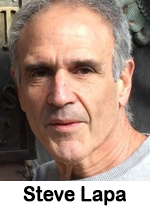 How might we better serve you in the future? How would you rate our service?
How might we better serve you in the future? How would you rate our service?